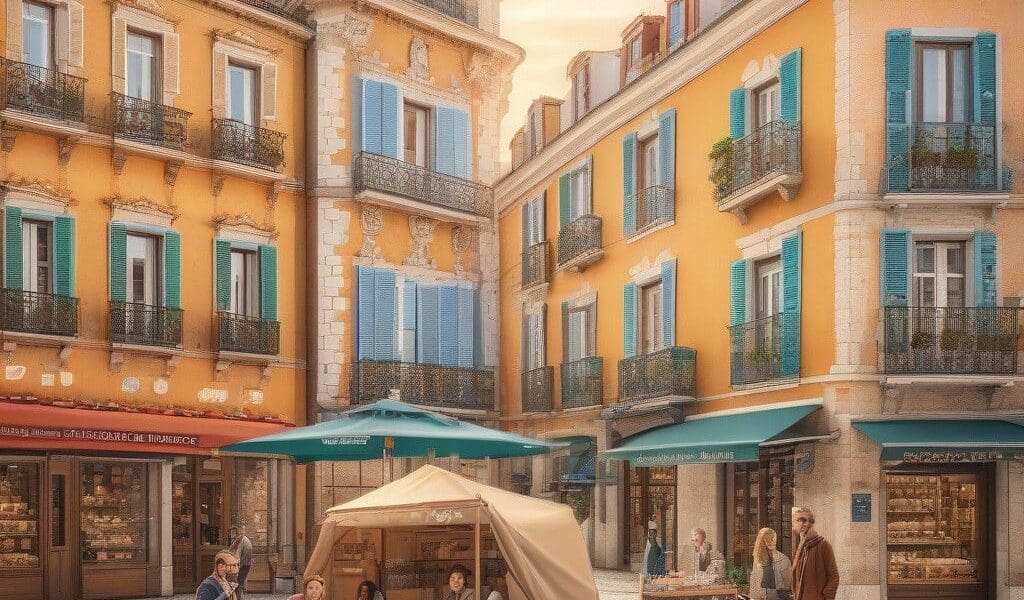Portugal, situated on the Iberian Peninsula and bordered by Spain, boasts a captivating coastline and several beautiful islands. Notably, its economic landscape is buoyed by a thriving tourism sector, which has helped propel its GDP to $287.08 billion in 2023, with growth projections of 2.0% for 2024 and 2.3% for 2025. E-commerce is rapidly expanding within this context, reflecting substantial shifts in consumer behavior and digital engagement.
Current Trends in Portuguese E-Commerce
The e-commerce market in Portugal is projected to reach $4.78 million by the end of 2024 and is expected to grow to $7.71 million by 2029. This growth is underpinned by several factors, including high internet penetration, consumer demand for convenience, a diverse array of products, and the increasing acceptance of digital payment methods. In pursuing these advantages, local and international retailers are reaping the benefits of a digital-first approach.
Several key players dominate the online retail landscape, with OLX, Worten, Amazon, AliExpress, and Leroy Merlin leading the charge. Despite Amazon’s global prominence, it ranks third in popularity within Portugal. This reflects a slightly different market dynamic compared to Germany, showing the strength of local marketplaces.
Shifting Consumer Preferences
An analysis of Portuguese consumer behavior reveals a keen interest in both comfort and fashion when shopping online. As of March 2024, clothing emerged as the most popular category, with 56% of consumers showing a preference for apparel, followed closely by shoes at 35%. The country’s rich textile and footwear tradition supports this preference, with renowned brands like Stella McCartney and Burberry producing in the Porto region.
Moreover, Portuguese consumers are increasingly price-sensitive, as seen in a recent survey where 86% actively seek out special offers. Comfort and practicality are also significant, influencing 80% of shoppers when choosing apparel. Interestingly, 50% of respondents place importance on fashion, showcasing a balance between aesthetics and functionality.
Digital Media Engagement
The rise of digital media further shapes consumer opinions in Portugal. A survey reported that 51% of respondents used digital services to discover new content, while 46% felt overwhelmed by the costs of multiple streaming subscriptions. This highlights a diverse consumer landscape with varying needs and priorities, which businesses must navigate in their marketing strategies.
Consumer confidence is slowly recovering, with an index of -13.1 in September 2024—the highest figure since 2021—indicating increased optimism about financial futures. Such signs of recovery are crucial for retailers looking to increase customer engagement and drive sales.
Payment Preferences
Understanding payment preferences is vital for any enterprise looking to succeed in the Portuguese e-commerce market. Currently, debit cards dominate online transactions, with 62% of consumers using them. Online payment platforms, including PayPal and Google Pay, are also popular, appealing to 56% of the market. The rise of seamless payment options fosters consumer confidence in e-commerce, allowing for greater transaction fluidity.
Even more interesting is the growing acceptance of Buy Now, Pay Later (BNPL) options, with services like Klarna leading the trend. These flexible payment solutions cater well to a consumer base increasingly inclined towards manageable financial planning.
Influence of Social Media
Social media has become an integral part of the Portuguese e-commerce ecosystem, with 7.43 million users representing 72.6% of the population in 2024. On average, users engage with 6.7 platforms monthly, primarily to connect with friends, seek product inspiration, and consume content. Instagram holds the spotlight as the most popular platform, yet TikTok rules in terms of time spent, indicating that video content resonates strongly with this demographic.
The favorability of short, engaging content means retailers must craft their strategies accordingly to captivate the Portuguese audience, enhancing their brand’s presence in the social space.
Logistics Landscape
Portugal’s logistics infrastructure supports the growing e-commerce sector, marked by increasing demand for logistics space and container port traffic. Forecasts suggest that logistics costs in the Transportation and Logistics market could reach $35.22 billion by 2029. This robust logistical environment not only bolsters domestic retailers but also strengthens Portugal’s position as a European trade hub.
Conclusion
The e-commerce market in Portugal showcases resilience and growth amid challenges, driven by shifts in consumer behavior and digital innovations. With a dynamic landscape characterized by diverse payment methods, an engaged social media user base, and sound logistical infrastructure, the prospects for both local and international brands are promising. As consumers increasingly prefer online shopping, retailers have an unprecedented opportunity to establish a foothold in this burgeoning market.












